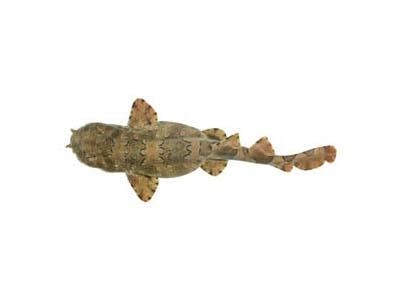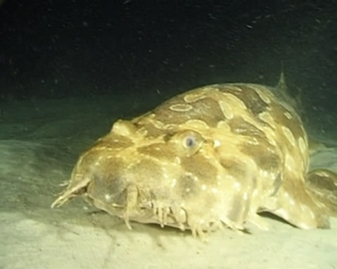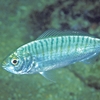Other Names
- Banded Wobbegong
- Ornate Wobbegong
- Carpetshark
General Description
A large robust flattened shark with a very ornate colour pattern; nasal barbels brached; branched dermal lobes along the side of the head and 5-6 before the eye; two tubercles above the eye, but no tubercles along back. Yellowish-brown to greyish-brown with darker, deeply scalloped saddles, each with a black-spotted border; a prominent white spot behind each spiracle; underside pale. To at least 2.1 m.
Biology
Despite appearing sedentary, wobbegongs have sharp, dagger-like teeth and can inflict very painful injuries if disturbed. They are usually nocturnal, seen resting under ledges and in caves during the day. They feed on fishes, octopus and crustaceans, and are commercially fished, especially off New South Wales. Females give birth to live young.
Habitat
Shallow coastal to inshore continental shelf waters, in depths to 100 m.
Reefs
Soft substrates
Distribution guide
Southern Australia.
Species Group
Depth
Shallow (1-30 m)
Deep ( > 30 m)
Water Column
Max Size
2.1 m
Diet
Carnivore
Harmful
Sharp dagger-like teeth can inflict painful injuries.
Commercial Species
No
Global Dispersal
Native to Australia
Conservation Status
- DSE Advisory List : Not listed
- EPBC Act 1999 : Not listed
- IUCN Red List : Near Threatened






